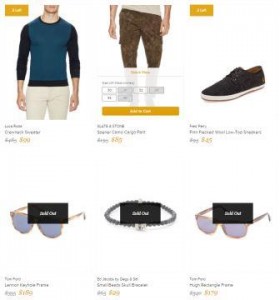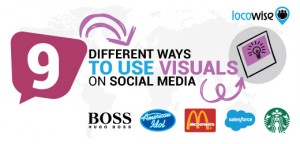 High Performing Business Cultures Embrace Diversity
High Performing Business Cultures Embrace Diversity
Creating a thriving employment culture persists as a topic at the forefront of employment issues, and this year will be no exception. Part of the reason is diversity. More than 80 percent of organizations around the globe cite cultural fit as a primary employment priority. And yet, as noted industry pundit Dr. John Sullivan points out, diversity programs routinely fail to reach their recruiting goals: “I find that this failure is primary because of four factors, 1) relying on emotion rather than data; 2) being risk adverse [sic]; 3) not using assigned referrals; and 4) over focusing on EEOC goals rather than improving business results because of increased diversity in key jobs.”
Although diversity stands as a significant driver of progress — and has increased — the momentum has been slower than expected. The revealing diversity reports from some of the world’s leading technology giants exemplified this throughout 2014 and 2015. And when hiring selections are based on personal fits, rather than cultural fits, they stifle inclusion — not to mention performance and innovation. So it’s fascinating to see, as Dr. Sullivan explains, that a technology company has developed one of the most straightforward, effective and easily replicated recruitment strategies for diverse talent. By modeling sourcing strategies around the proactive principles practiced by Pinterest, staffing suppliers can help their MSPs achieve dramatic results.
The Undeniable Link Between Culture, Values and Diversity
The concept of cultural fit, first championed in the 1980s, involves the Big Data and predictive analytics that have become so touted today. Using data and human interaction, enterprise hiring and retention initiatives can be strengthened when workers are chosen because their skills, experience, personality and values mesh well with the organization’s strategy.
When performed properly, employees feel a greater sense of attachment to their roles and teams, produce more and remain with companies longer. However, cultural fit has morphed into a murkier concept. More than a systematic analysis of who will thrive in a given workplace, we unfortunately see too many instances of hiring managers basing their employment decisions on whom they’d rather hang out with.
The issue is ongoing and pronounced. Just last month, President Obama pushed new rules to crack down on employers that pay men and women differently for the same work. Not only must businesses report salaries based on gender, those that pay women less will face investigations and lawsuits from the Equal Employment Opportunity Commission. Yet even these efforts narrow the category of diversity and focus on only a single subset.
To instill diverse values, a company must understand all the definitions that come into play when assessing the composition of a multicultural workforce. Diversity reaches far beyond race and gender, although those issues certainly linger. In a fully human employment culture, diversity must also include other categories, such as workers in need of accommodations, mature professionals, veterans and transgender talent.
Staffing Professionals Can Become Even More Powerful Diversity Advocates
The staffing industry has historically spearheaded strategies aimed at maximizing the inclusion of diverse talent in the workplace. And the tireless efforts of MSPs and their staffing partners reach far beyond considerations of gender and race alone.
- MSPs have outpaced many internal HR departments in sourcing disabled workers and championing reasonable accommodations.
- MSPs and their staffing partners have strongly committed to following the best practices outlined by longstanding LGBT advocacy groups. In doing so, they’ve helped their clients abandon fears of differences and start preoccupying themselves with mutual wins.
- MSPs and their staffing partners worked hard in 2015 to help overcome the challenges of recruiting mature talent, allowing clients to build the most robust workforces imaginable.
It’s clear that MSPs and staffing professionals place tremendous value in an all-encompassing talent population. And by including some of Pinterest’s unique practices into the mix, they can help clients optimize their diversity programs even more. In a mere six weeks, the Pinterest program witnessed astounding gains: “A 55-fold increase in the percentage of candidates from underrepresented ethnic backgrounds” and a “24-percent increase in women applicants.”
A Proactive Approach to Diversity Recruiting
What’s so interesting about Pinterest’s diversity initiative is that it’s referral based. Industry experts agree that employee referrals routinely top the charts as the source of quality candidates. Yet few, if any, organizations have implemented a similar referral program to scout exceptional diversity talent. And that’s where the Pinterest method shines.
Diversity programs should be active. The majority of referral programs are passive. They require employees to take action on their own, and recruiters must wait around for any leads to materialize. In a proactive campaign, staffing suppliers can achieve superior outcomes for MSPs by approaching their talent directly and selectively. When staffing professionals personalize the message to specific workers, they create a sense of recognition that makes workers feel special. The messages themselves should also be targeted and individual — not generic, uniform calls that can be ignored. In-person conversations or personalized electronic communications are the most effective means.
Clearly define diversity targets. Typical referral programs seldom put enough emphasis on desired skills or characteristics. Beyond mentioning diversity in recruiting materials, MSPs can help drive the program by promoting diversity as a critical corporate goal. By further elaborating on specific criteria (such as the need for female web development managers), workers get a clear profile that can help them identify the ideal candidates from their networks.
Empower talent to participate. “Under most standard diversity referral efforts,” Sullivan writes, “the employee is merely asked to share their contact lists, and then they are done.” In the proactive model, staffing providers forgo attempts to collect lists from their talent. Instead, they encourage their professionals to carefully consider stellar prospects based on the established needs. Empowering and engaging talent to participate instills a sense of ownership in reaching the diversity goal, which enhances their commitment to locating the perfect people.
Once staffing suppliers have identified the best workers for the task, they can ask them to undertake the role of building relationships and making referrals in dedicated diversity areas. Providing formal recognition or even a small bonus, similar to other referral programs, can create additional incentives.
Create a diversity referral toolkit. Simply asking a person to think of a solid referral can result in a lot of blank stares and uncertainty. One trick is to avoid open-ended questions such as, “Who are diversity contacts you know?” A better approach, one endorsed by Dr. Sullivan and Google, is to ask targeted questions such as, “Who’s the best female software architect you’ve ever worked with?” Another creative tactic is developing a referrals toolkit. This not only improves the process, it again demonstrates an unwavering commitment to attaining diversity objectives for MSPs and clients. Staffing suppliers can succeed by:
- Providing chosen talent with referral cards they can give to diversity candidates when they connect with them.
- Educating selected workers with access to webinars, conferences, websites, literature, diversity associations, and other resources that offer guidance in hiring and building relationships with diversity candidates.
- Providing talent with tools for diversity referrals: frequently asked questions, key selling points, testimonials, depictions of the employment culture, and informative blogs or social media.
Track the results. Without measuring performance and response rates, no continuous improvement initiatives can take place. Staffing curators can help their MSP partners monitor progress by working with talent to create metrics for the referral program. As Dr. Sullivan suggests, including referrals as an element of performance appraisals — which could factor into pay raises — can have a positive impact. MSPs and their staffing partners should also consider following top diversity talent on LinkedIn to see if any rejected candidates became “wildly successful” at competing organizations. This information better equips MSPs to influence the direction of the program with hiring managers.
Make the business case for diversity with the client. A successful diversity referral program still requires the buy-in and support of client hiring managers. MSPs already play an instrumental role in illustrating the financial and cultural benefits of a diverse workforce. They can further assist their staffing partners by leveraging their relationships with hiring managers, procurement officers and HR leaders to make a business case for expanding diversity outreach to this new area. And as with any diversity initiative, MSPs remain pivotal in working with clients to overcome hiring biases that occur when decisions are based on appearance, hobbies, names and first impressions — or which take the form of job descriptions that demand excessive experience, formal titles, or advanced degrees from ivy league universities.
Exceptional Performance Comes From Exceptional Talent — No Matter Who They Are
The more we focus on differences, the more we consume ourselves with those differences — not the 99-percent of our being that connects us all as humans. And the staffing industry has consistently led the charge to create fully human workplaces. By capitalizing on new sourcing avenues, such as talent-driven referral programs, MSPs and their staffing partners can continue to evolve the diversity and caliber of their clients’ workforces.
Business & Finance Articles on Business 2 Community(69)
Report Post





